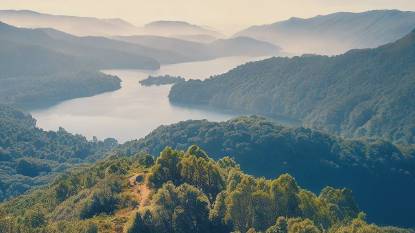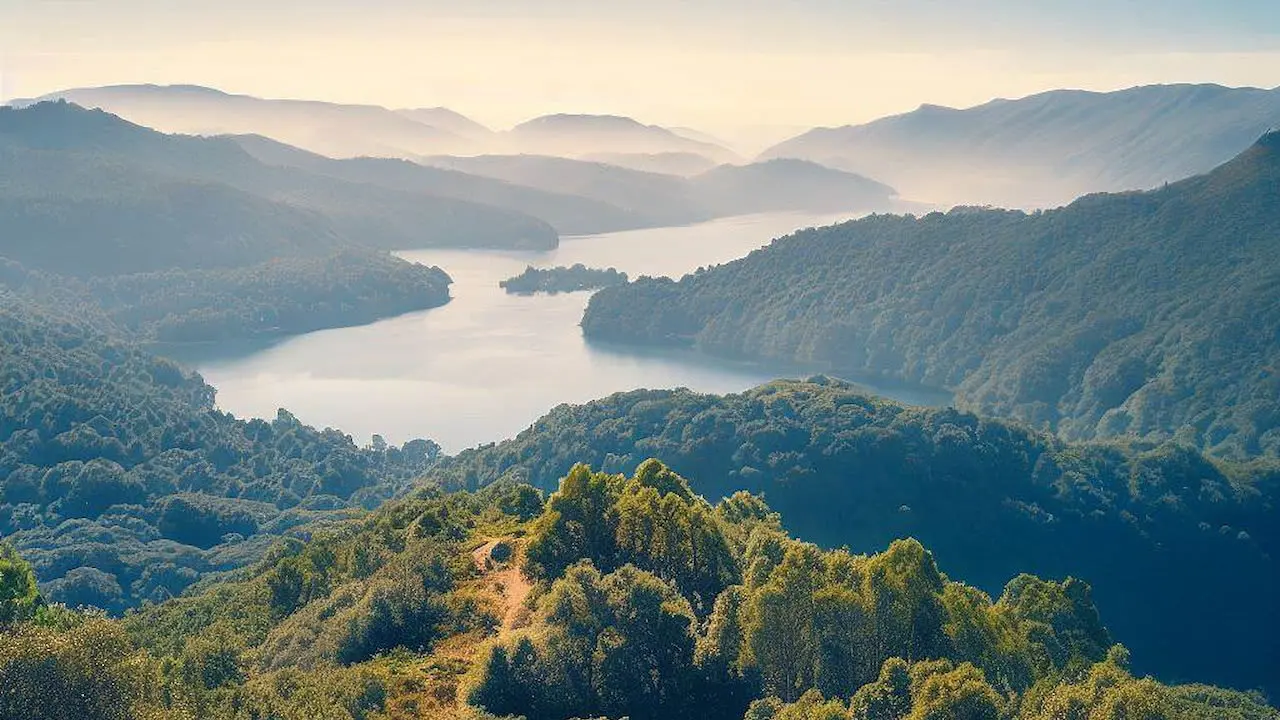
Fragas do Eume Natural Park: Camino Inglés Enchanted Forest
Posted: | Updated:
Reading time: 26 minutes
Fragas do Eume Natural Park: Camino Inglés Enchanted Forest
Posted: | Updated:
Reading time: 26 minutes
By: Simon Kemp, Editor
Have you ever wondered what the ancient forests of Europe looked like before human intervention? Have you ever dreamed of walking among towering trees, listening to the sounds of nature, and discovering the secrets of a rich and diverse ecosystem? If so, you might want to visit The Parque Natural de las Fragas do Eume in Spain while walking along the Camino Inglés , one of the best preserved examples of a temperate rainforest in Europe.
Key Takeaways
Here are some key takeaways about the Park:
- Fragas do Eume is a natural park in Spain that has one of the best preserved temperate rainforests in Europe, with oak and other trees as the dominant species.
- The park covers 9,125 hectares and is located in the province of A Coruña, Galicia, in the north-west of Spain. It was declared a natural park in 1997 and is also recognized as a Site of Community Importance by the European Union.
- The park has a rich history, ecology, culture and conservation value. It has been inhabited and used by different civilizations and peoples since the Neolithic, and has influenced the identity, folklore and traditions of Galicia. It also hosts a diverse range of flora and fauna, including some rare or endemic species. It also has a cultural heritage that includes the Monastery of Caaveiro, a historic-artistic monument from the 10th century.
- The park offers various activities for visitors, such as hiking, wildlife viewing, visiting the Monastery of Caaveiro, picnicking and kayaking. The park also has a visitor center that provides information and guidance for visitors.
- The park faces several threats and challenges, such as deforestation, fire, urbanization and climate change. These threats affect its biodiversity and ecosystem services, as well as its health and well-being of its inhabitants. The park also has some solutions and actions for its conservation and restoration, such as legal protection, management planning, restoration projects, education and awareness programs.
Map of the Fragas Natural Park
Local language names
- Spanish: Parque Natural de las Fragas do Eume
- Galician: Fragas do Eume
- English: Fragas do Eume Natural Park
In this article, I will introduce you to this natural and cultural treasure, located in the north-west of Spain, in the province of A Coruña, Galicia. I will tell you about its history, ecology, culture and conservation, and why it is worth visiting and enjoying responsibly and respectfully. I will also provide you with some useful information and links for further reading or planning a trip.
I chose this topic because I was fascinated by the beauty and uniqueness of this park, which I had the opportunity to visit a few years ago. I was amazed by the diversity and richness of its flora and fauna, as well as by its cultural heritage and significance. I wanted to share my experience and knowledge with you, and hopefully inspire you to discover this wonderful place for yourself.
So, let me ask you a question: Do you know what a fraga is? If not, don’t worry, I will explain it to you in the next section.
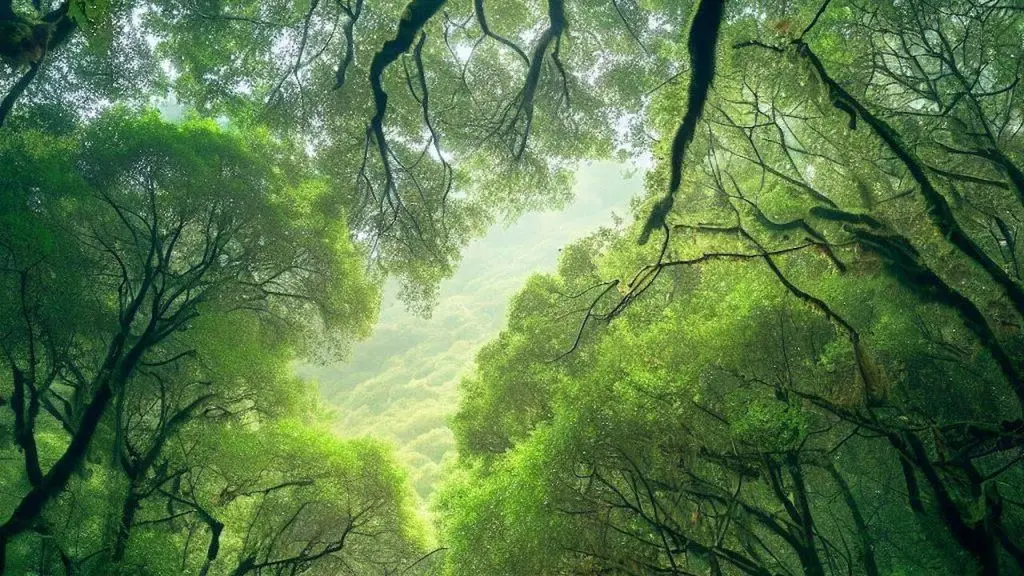
The History of Fragas
A fraga or Atlantic Forest is a Galician word that means “natural woodland” or “old-growth forest” It is a type of forest that has remained relatively unchanged since the Neolithic, with little or no human intervention Fragas are characterized by their high biodiversity, complex structure, and ecological functions.
Fragas are remnants of the ancient forests that covered most of Europe before human intervention. They are home to many species of plants and animals that have adapted to the humid and shady conditions of these forests. They also have a cultural and historical value, as they have been used and managed by different civilizations and peoples throughout history, such as Celts, Romans, Visigoths, Arabs and Christians.
Fragas have influenced the identity, folklore and traditions of Galicia and its inhabitants. For example, fragas are related to the concept of “Celtic nations” and their common heritage. Galicia is considered one of the six Celtic nations, along with Ireland, Scotland, Wales, Brittany and Cornwall5 Fragas are also associated with legends and myths, such as the stories of fairies, witches and spirits that live in the woods.
Fragas are not the only type of forest in Europe or around the world. There are other types of forests that differ in terms of climate, biodiversity, structure and function. For example, boreal forests are found in cold regions near the Arctic Circle; temperate forests are found in mild regions with four seasons; tropical forests are found in hot and humid regions near the equator.
Each type of forest has its advantages and disadvantages for humans and nature. For example, boreal forests store large amounts of carbon dioxide; temperate forests provide many ecosystem services such as water regulation; tropical forests host more than half of the world’s species. However, each type of forest also faces threats and challenges such as deforestation, fire, urbanization and climate change.
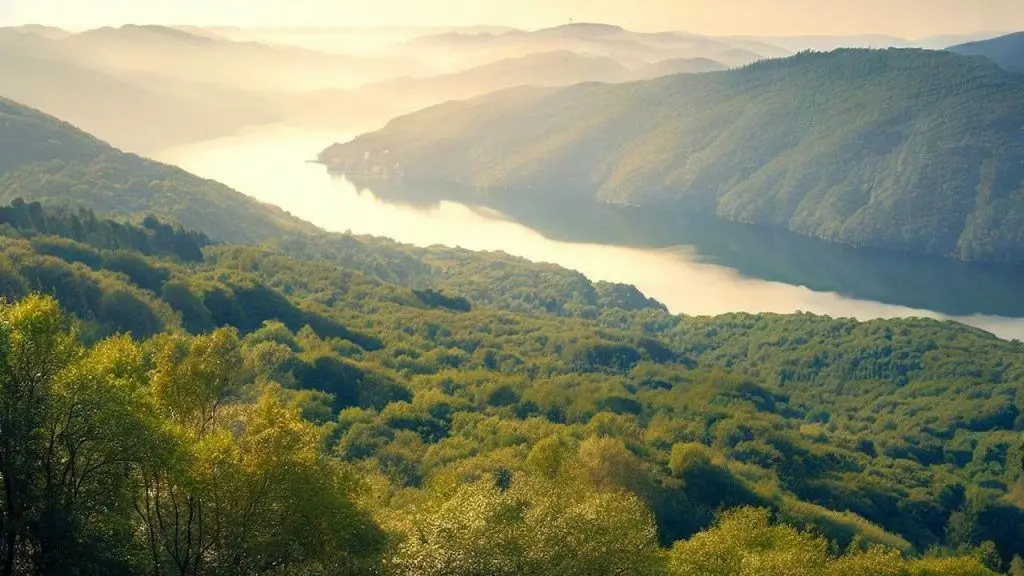
The following table shows some similarities and differences between fragas and other types of forests:
Fragas and other types of forests
| Type | Climate | Biodiversity | Structure | Function |
|---|---|---|---|---|
| Fraga | Humid temperate | High | Multi-layered | Carbon storage; water regulation; habitat provision |
| Boreal | Cold continental | Low | Single-layered | Carbon storage; timber production |
| Temperate | Mild temperate | Moderate | Multi-layered | Ecosystem services; recreation; timber production |
| Tropical | Hot tropical | Very high | Multi-layered | Species richness; carbon storage; medicine production |
Fragas and other types of forests Fragas are a unique type of forest that deserve our attention and appreciation. However, they also face many threats and challenges that endanger their survival and well-being. In the next section, I will discuss some of these threats and challenges, as well as some solutions and actions to prevent them.
Main threats and challenges to fragas
Fragas are under pressure from various factors that threaten their existence and integrity. Some of these factors are:
- Deforestation: The loss or degradation of forest cover due to human activities such as logging, agriculture or urbanization. Deforestation reduces the area and quality of fragas, and affects their biodiversity and ecosystem services. According to the World Wildlife Fund, Spain has lost 5% of its forest cover since 1990.
- Fire: The occurrence of uncontrolled or intentional fires that damage or destroy forest vegetation and soil. Fire can be caused by natural factors such as lightning or drought, or by human factors such as negligence or arson. Fire can alter the structure and composition of fragas, and increase their vulnerability to pests and diseases. According to the European Forest Fire Information System, Spain had 12,000 fires that burned 115,000 hectares of forest in 2020.
- Urbanization: The expansion of human settlements and infrastructure into forest areas. Urbanization reduces the connectivity and continuity of fragas, and increases their fragmentation and isolation. Urbanization also increases the demand for resources and services from fragas, such as water, energy or recreation. According to the European Environment Agency, Spain has urbanized 13% of its land area since 1990.
- Climate change: The alteration of the global climate system due to the emission of greenhouse gases from human activities. Climate change affects the temperature, precipitation and seasonality of fragas, and modifies their growth and distribution patterns. Climate change also exacerbates the effects of other threats such as fire, pests and diseases. According to the Intergovernmental Panel on Climate Change, Spain is expected to face more heat waves, droughts and floods in the future.
These threats and challenges have serious consequences for fragas and their inhabitants, both human and non-human. For example, they can reduce the availability and quality of water; increase the risk of soil erosion and landslides; decrease the production of timber and non-timber products; reduce the opportunities for recreation and tourism; affect the health and well-being of people and wildlife; and compromise the cultural and historical value of fragas.
Therefore, it is essential to take action to prevent, mitigate or reverse these threats and their effects. In the next section, I will propose some solutions and actions that can help to conserve and restore fragas.
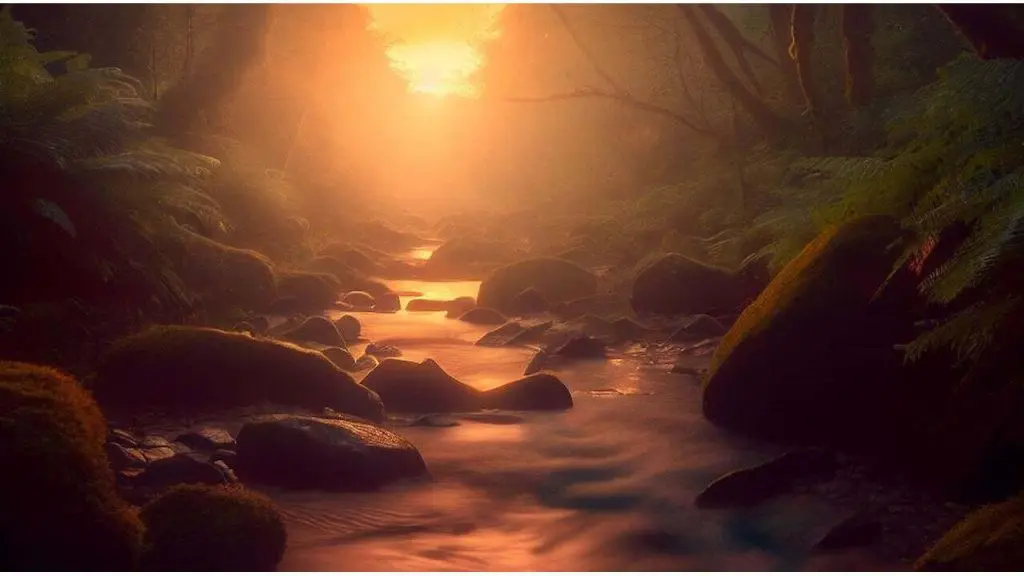
Solutions and actions for fragas conservation
Fragas are a natural and cultural treasure that need our care and protection. There are many solutions and actions that can help to conserve and restore fragas, such as:
- Legal protection: The establishment of laws and regulations that recognize the value and importance of fragas, and that prohibit or limit activities that harm them. Legal protection can also provide incentives or subsidies for activities that benefit them. For example, the park was declared a natural park in 1997 by the regional government of Galicia, which grants it a level of protection lower than a national park. The park is also recognized as a Site of Community Importance by the European Union, which obliges its conservation according to the Habitats Directive.
- Management planning: The development and implementation of plans that define the objectives, strategies and actions for the conservation and restoration of fragas. Management planning can involve different stakeholders such as governments, NGOs, local communities, landowners, researchers or visitors. The park has a management plan that was approved in 2005 by the regional government of Galicia, which sets out the guidelines for its administration, use and protection. The plan also includes a monitoring system that evaluates its state and evolution.
- Restoration projects: The execution of projects that aim to recover or improve the ecological condition of degraded or damaged fragas. Restoration projects can involve different techniques such as planting native trees, removing invasive species, creating firebreaks or restoring watercourses. For example, after a fire destroyed part of the park in 2012, several restoration projects were carried out by different entities such as the regional government of Galicia, NGOs or volunteers. These projects included reforestation with native species, erosion control with straw bales or fences, removal of burnt wood or debris, or creation of educational trails.
- Education and awareness: The promotion of education and awareness programs that inform and sensitize people about the value and importance of fragas, as well as about their threats and challenges. Education and awareness programs can target different audiences such as students, teachers, tourists or locals. They can use different methods such as workshops, exhibitions, publications or campaigns. For example, the park has a visitor center that offers guided tours, educational activities or information materials about the park. The park also organizes events such as festivals or conferences to celebrate its natural and cultural heritage.
These solutions and actions can help to conserve and restore fragas, but they also require our participation and collaboration. We all have a role to play in protecting this natural environment.
The 3 Entrances or Portals to Fragas do Eume
The park has three main entrances or portals, each one offering a different perspective and experience of the fragas (Galician word for natural woodland). These are:
- Portal de Teixido: This entrance is located in the north-east of the park, near the village of Teixido, famous for its sanctuary dedicated to San Andrés. From here, you can access the Mirador de Teixido, a viewpoint that offers panoramic views of the coast and the fragas. You can also visit the Ecomuseo Forno do Forte, an ethnographic museum that showcases the traditional activities and crafts of the area.
- Portal de Caaveiro: This entrance is located in the heart of the park, where the Eume River forms a deep canyon. Here you can find the Centro de Interpretación de Caaveiro, a visitor center that provides information and guidance about the park. You can also visit the Monasterio de Caaveiro, a medieval monastery that stands on a rocky hill overlooking the river. The monastery has a Romanesque church and a cloister, and hosts cultural events throughout the year.
- Portal de Monfero: This entrance is located in the south-west of the park, near the town of Monfero. Here you can find the Centro de Interpretación de Monfero, another visitor center that focuses on the natural and cultural values of the fragas. You can also visit the Monasterio de Monfero, another medieval monastery that has a Baroque facade and a neoclassical church. The monastery is surrounded by gardens and forests, and is part of a network of hiking trails that connect with other points of interest in the park.
Activities for Visitors
Visitors to the Parque Natural can engage in a variety of activities:
- Hiking: The park offers beautiful and pleasant linear hiking routes around the town of Pontedeume in A Coruña. The route begins in the parking lot of the Fragas recreational area, and continues along the Carretera del Río.
- Wildlife Viewing: The park is home to 15 species of amphibians, 14 species of reptiles, 8 species of fish, 103 species of birds and 41 species of mammals. This makes it one of the areas with the most valuable fauna in Spain.
- Monastery of San Xoán de Caaveiro: Tucked away inside the park itself is the Monastery San Xoán de Caaveiro , a historic-artistic monument that dates back to the 10th century. It is one of the jewels of medieval architecture and it is worth visiting.
- Picnicking: There are plenty of picnic tables (merenderos) to stop at on the way. Visitors often choose to have a picnic and sit on the rocks by the river admiring the tranquility and calmness of the river and its stunning views.
- Kayaking: Some visitors opt for kayaking in the park.
Remember, when visiting natural parks like Fragas do Eume, it’s important to respect the environment and follow any guidelines or rules set by the park authorities.
Hiking Trails in Fragas do Eume
Here are some of the best hiking trails in the Natural Park, based on my personal experience and the recommendations of other hikers. These trails will allow you to explore the different landscapes and attractions of the park, from the lush forest to the river banks, from the ancient monastery to the scenic viewpoints. All of these trails are well-marked and easy to follow, but they vary in length and difficulty, so you can choose the one that suits your preferences and abilities. Here are my top picks for hiking in:
Table of Hiking Trails
These are some of the best hiking trails in the Natural Park, Spain. I hope you find this blog post helpful and informative. If you decide to visit this natural park, make sure to follow the park rules and respect the environment. Also, don’t forget to bring water, snacks, sunscreen, insect repellent and appropriate clothing and footwear. Have fun and stay safe!
| Trail Name | Terrain | Difficulty | Distance | Time Taken |
|---|---|---|---|---|
| Senda dos Encomendeiros | Forest, river | Moderate | 8.8 mi | 4h 17m |
| Camiño de A Ventureira | Forest, river | Moderate | 4.3 mi | 2h 22m |
| Pena da Aiga – Embalse del Eume – Mirador da Carboira | Forest, lake, viewpoint | Moderate | 6.3 mi | 3h 29m |
| Penedo Empardado – Pena Dos Mouros | Forest, river | Moderate | 3.6 mi | 2h 5m |
| Mosteiro de Caaveiro loop from Ombre | Forest, river, monastery | Intermediate | 14.3 km | 3h 53m |
| Mosteiro de Caaveiro – Bañito loop from Ombre | Forest, river, monastery, swimming spot | Expert | 21.2 km | 5h 52m |
| Bañito – Mosteiro de Caaveiro loop from San Pedro de Eume | Forest, river, monastery, swimming spot | Intermediate | 7.2 km | 2h 4m |
| Fragas do Eume loop from San Pedro de Eume | Forest, river | Intermediate | 11.5 km | 3h 54m |
| Mosteiro de Caaveiro – Bañito loop from San Pedro de Eume | Forest, river, monastery, swimming spot | Intermediate | 10.7 km | 3h 3m |
| Bañito – Mosteiro de Caaveiro loop from Taboada | Forest, river, monastery, swimming spot | Intermediate | 7.28 km | 2h 6m |
| Mosteiro de Caaveiro loop from San Pedro de Eume | Forest, river, monastery | Intermediate | 16 km | 4h 31m |
| Mosteiro de Caaveiro loop from Taboada | Forest, river, monastery | Easy | 6.57 km | 1h 50m |
| Miradoiro da carbueira loop from Monfero | Forest, viewpoint | Intermediate | 5.96 km | 1h 41m |
| Bañito loop from San Pedro de Eume | Forest, river, swimming spot | Intermediate | 7.35 km | 2h35m |
As you can see, there are plenty of options for hiking in Fragas do Eume, depending on your preferences and fitness level. You can enjoy the beauty of nature, the history of the monastery and the refreshing water of the river. Some of the trails are circular loops that start and end at the same point, while others are linear routes that require transportation or shuttle service. Here are some more details and tips for each trail:
- Senda dos Encomendeiros: This is a beautiful and pleasant linear hiking route around the town of Pontedeume. The route begins in the parking lot of the Fragas recreational area and follows the Carretera del Río (River Road), passing by As Galladas on the left, the Cal Grande Fishermen’s Refuge and the Senda dos Encomendeiros (Trail of the Commissioners). The trail ends at the Caaveiro Monastery, where you can visit the museum and enjoy the views of the valley. To return to the starting point, you can either take a park bus (in summer) or walk back along the same route or a different one.
- Camiño de A Ventureira: This is a moderate circular hiking route that starts at the Ombre Fishing Couto (Fishing Reserve), where the access road to the Fragas from Pontedeume ends. You can park your car there or take a park bus (in summer). The trail follows the river and then climbs up to the A Ventureira viewpoint, where you can see the Eume Reservoir and the Pena da Aiga peak. The trail then descends to the river again and passes by the Bañito (Little Bath), a popular swimming spot, before returning to the starting point.
- Pena da Aiga – Embalse del Eume – Mirador da Carboira: This is a wonderful circular hiking route that runs through the park, a magical forest reminiscent of those in the movies. The trail starts in the area of A Cova and passes by the Penedo Empardado (Walled Rock) on the left and the magnificent Eume River in front. The trail then climbs up to the Pena da Aiga (Water Rock), a rocky outcrop with a cross on top, and then to the Eume Reservoir, a large artificial lake created by a dam. The trail then continues to the Mirador da Carboira (Carboira Viewpoint), where you can enjoy panoramic views of the forest and the valley. The trail then descends back to the starting point.
- Penedo Empardado – Pena Dos Mouros: This is a beautiful and short hiking route through the Natural Park, in the surroundings of the towns of Suoscarballos, O Fornos, A Ribeira and O Rodeiro. The route begins in the area of A Cova and follows the same path as the previous trail until it reaches the Penedo Empardado. Then, it turns right and crosses the river to reach the Pena Dos Mouros (Moorish Rock), a large granite boulder with a legend of hidden treasure. The trail then returns to the starting point along the same route or a different one.
- Mosteiro de Caaveiro loop from Ombre: This is an intermediate circular hiking route that starts at the Ombre Fishing Couto and follows the same path as the Camiño de A Ventureira until it reaches the Caaveiro Monastery. Then, it continues along a different path that passes by some waterfalls and crosses the river several times before returning to the starting point.
- Mosteiro de Caaveiro – Bañito loop from Ombre: This is an expert circular hiking route that starts at the Ombre Fishing Couto and follows the same path as the Camiño de A Ventureira until it reaches the Caaveiro Monastery. Then, it takes a different route that goes by some cascades and crosses the river a few times before going back to the starting point. This trail is longer and more challenging than the previous one, but also more rewarding, as you can see more of the natural beauty of the park and enjoy a refreshing dip in the Bañito.
- Bañito – Mosteiro de Caaveiro loop from San Pedro de Eume: This is an intermediate circular hiking route that starts at the town of San Pedro de Eume and follows a path along the river until it reaches the Bañito. Then, it climbs up to the Caaveiro Monastery and returns to the town along a different path. This trail is shorter and easier than the previous one, but still offers a nice combination of nature, history and water.
- Fragas do Eume loop from San Pedro de Eume: This is an intermediate circular hiking route that starts and ends at the town of San Pedro de Eume. The trail follows a loop around the entire park, passing by different sections of the forest and the river. You can admire the diversity of flora and fauna, as well as some historical landmarks, such as bridges, mills and chapels.
- Mosteiro de Caaveiro – Bañito loop from San Pedro de Eume: This is an intermediate circular hiking route that starts at the town of San Pedro de Eume and follows the same path as the previous trail until it reaches the Caaveiro Monastery. Then, it descends to the Bañito and returns to the town along a different path. This trail is similar to the previous one, but with an added attraction of the monastery and the swimming spot.
- Bañito – Mosteiro de Caaveiro loop from Taboada: This is an intermediate circular hiking route that starts at the village of Taboada and follows a path along the river until it reaches the Bañito. Then, it climbs up to the Caaveiro Monastery and returns to the village along a different path. This trail is similar to the previous one, but with a shorter distance and less elevation gain.
- Mosteiro de Caaveiro loop from San Pedro de Eume: This is an intermediate circular hiking route that starts at the town of San Pedro de Eume and follows a path along the river until it reaches the Caaveiro Monastery. Then, it returns to the town along a different path. This trail is shorter and easier than the previous one, but still offers a nice view of the monastery and the valley.
- Mosteiro de Caaveiro loop from Taboada: This is an easy circular hiking route that starts at the village of Taboada and follows a path along the river until it reaches the Caaveiro Monastery. Then, it returns to the village along a different path. This trail is shorter and easier than all the previous ones, but still offers a nice view of the monastery and the valley.
- Miradoiro da carbueira loop from Monfero: This is an intermediate circular hiking route that starts at the town of Monfero and follows a path through the forest until it reaches the Miradoiro da carbueira (Carbueira Viewpoint). Then, it returns to the town along a different path. This trail is short and moderate, but offers a stunning view of the forest and the valley from the viewpoint.
- Bañito loop from San Pedro de Eume: This is an intermediate circular hiking route that starts at the town of San Pedro de Eume and follows a path along the river until it reaches the Bañito, a popular swimming spot. Then, it returns to the town along a different path. This trail is short and easy, but offers a nice opportunity to cool off in the water and enjoy the scenery.
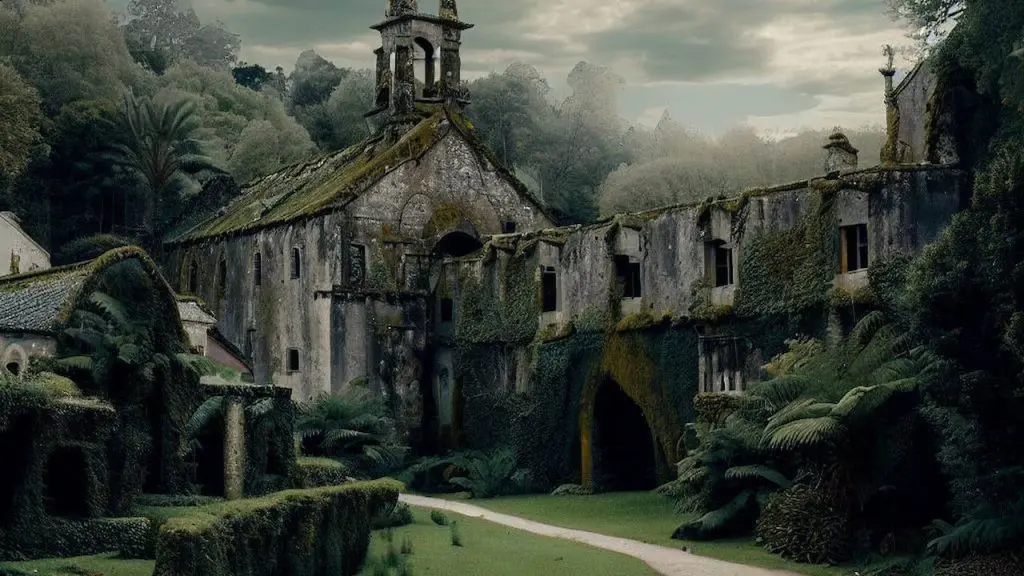
The Monastery of Caaveiro
The Monastery of Caaveiro was founded in the 10th century, making it much older than the Church of Santa María del Azogue in Betanzos , by Saint Rudesind, a Galician bishop and abbot who was canonized by the Catholic Church. He was a prominent figure in the reform of the monastic life and the promotion of the cult of the relics. He also participated in the political affairs of his time, defending the autonomy of Galicia from the interference of the kings of León.
The monastery has a Romanesque style, with a church, a cloister and several chapels. It also has some Baroque elements, such as the main façade and the altarpiece. The church has a single nave with a semicircular apse and a transept. The cloister has two levels, with arches supported by columns and capitals decorated with vegetal and animal motifs.
The chapels are dedicated to different saints, such as Saint Benedict, Saint Lawrence and Saint Anthony. The monastery was abandoned in the 19th century, after the confiscation of ecclesiastical properties by the Spanish government. It was restored in the 20th century and opened to the public as a cultural and tourist attraction. It is managed by the Galician government and offers guided tours and educational activities.
The Monastery of Caaveiro is open from Tuesday to Sunday from 10:00 to 20:00. The entrance fee is 2 euros per person, but it is free for children under 12 years old and for people with disabilities. You can also book a guided visit for 3 euros per person, which will give you more details about the history and architecture of the monastery.
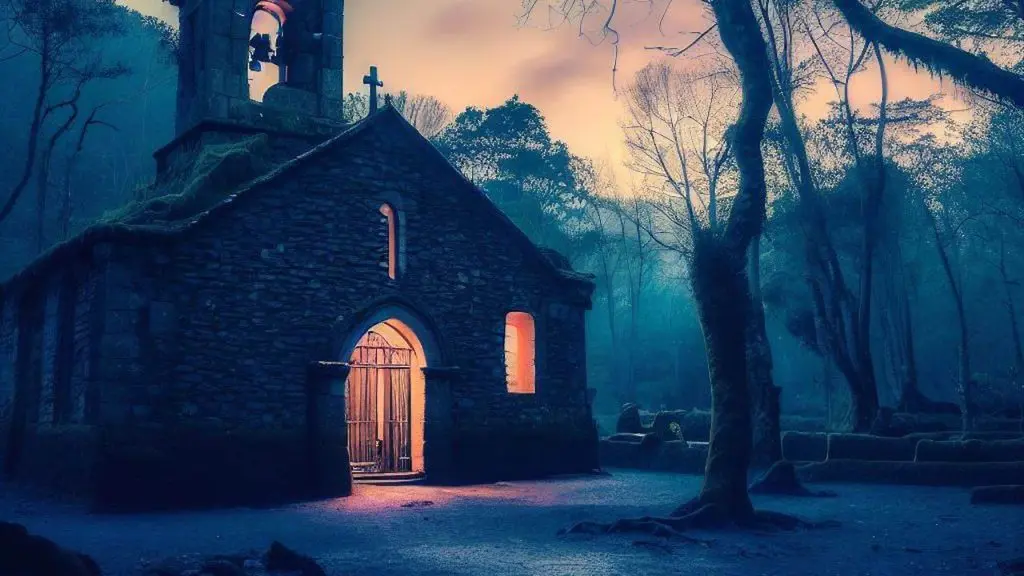
How to get to the Monastery of Caaveiro
To travel to the Monastery of Caaveiro, you have several options depending on your starting point and preferences. If you are coming from A Coruña, you can take the AP-9 motorway towards Ferrol and then exit at Pontedeume. From there, you can either park your car at the visitor centre and take a small bus that will take you to the monastery, or drive to A Capela and follow the signposted pathway to the monastery. The bus service costs 3 euros per person and runs every hour from 10:00 to 18:00.
The walk from A Capela is about 1 km long and takes about 40 minutes, but it is steep and rocky in some parts, so you need to wear comfortable shoes and bring water. The hike is steep and rocky at some points, but it offers beautiful views of the forest and the river. Along the way, there are some picnic areas and viewpoints where visitors can rest and enjoy the scenery.
If you are coming from Santiago de Compostela, you can take the AG-64 motorway towards Ferrol and then exit at As Pontes de García Rodríguez. From there, you can follow the AC-144 road to A Capela and then the same directions as above. Alternatively, you can join an organized tour that will take you to the Monastery of Caaveiro as well as other attractions in the area, such as the Playa de las Catedrales, Lugo and Ribadeo. You can find more information about these tours online or at your hotel.
At the monastery, there is a café where visitors can enjoy some drinks, snacks and toilets. There is also a small shop where visitors can buy souvenirs and local products, such as honey, cheese and jam.
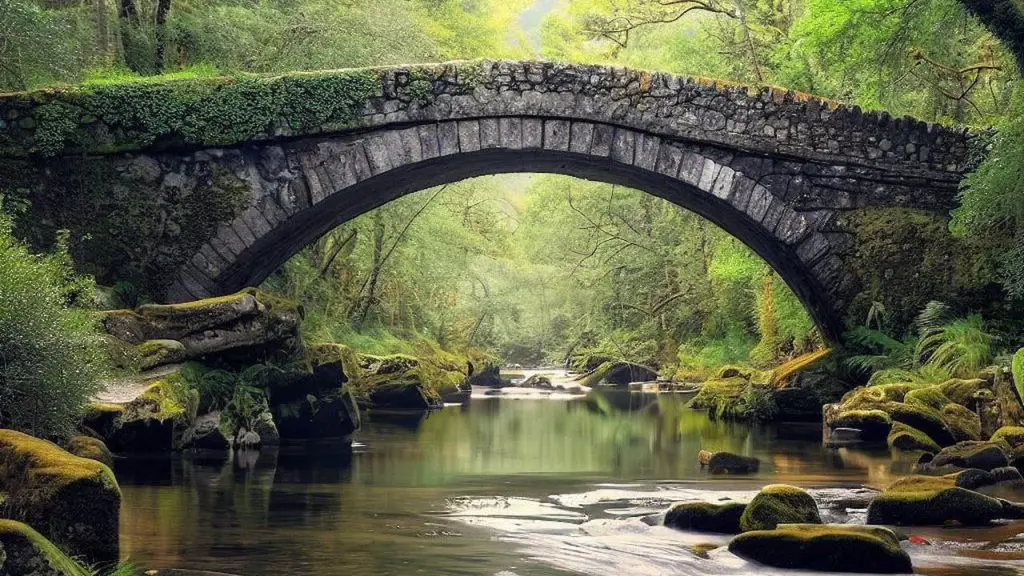
What is the best time of year to visit the Parque Natural?
The best time to visit the Fragas depends on your personal preferences and what you want to see and do. The park is open year-round and offers different experiences depending on the season.
- In spring, the park is in full bloom, with wildflowers and greenery everywhere. This is a great time to visit if you want to see the park’s flora at its best.
- In summer, the weather is warm and sunny, making it a great time for outdoor activities such as hiking, kayaking, and picnicking. However, it can also be crowded during this time, so it’s a good idea to plan ahead and arrive early.
- In fall, the leaves change color, creating a beautiful display of autumn foliage. This is a great time to visit if you want to see the park’s natural beauty in a different light.
- In winter, the park is quieter and less crowded. This can be a good time to visit if you want to avoid the crowds and enjoy the peace and tranquility of nature.
Ultimately, the best time to visit is whenever works best for you. Just be sure to check the weather forecast and dress appropriately for the conditions. Enjoy your visit!
Are there any hotels or campsites near the park?
Yes, there are several hotels and campsites near the Parque Natural Some options include:
- Casa Piñeiro: Casa Piñeiro is located in Monfero, next to the Eixo River and surrounded by A Coruñas’ beautiful countryside. This charming house features a terrace looking onto a garden and orchard.
- Hotels on TripAdvisor: TripAdvisor lists several hotels near the park, including Gran Hotel de Ferrol, Hotel Os Olivos, Parador de Ferrol, NOA Boutique Hotel, and Hotel Valenci.
- Hotels on Expedia: Expedia also offers a range of hotels and lodges near the Park, with prices ranging from $63 to $77 per night.
These are just a few of the many accommodation options available nearby. You can find more options by searching online or contacting a travel agent.
Are there any restaurants or cafes in the park?
There are no restaurants or cafes within the park itself, but there are several options for dining near the park.
Some of the restaurants near the park include Taberna de Caaveiro, Os Cen Pasos, Restaurante Muino do Vento, Luis Hostal Restaurante, and Restaurante Casa Pepe. These restaurants offer a variety of cuisines, including Spanish and Mediterranean.
How can I get to Fragas do Eume?
The Fragas park is located in the north-west of Spain, in the province of A Coruña, Galicia. There are several ways to get to it:
- By car: If you are driving, you can reach the park by taking the AC-151 road from Pontedeume. The route begins at the Ombre Fishing Couto, where the access road to the Fragas del Eume from Pontedeume ends. There you can park your car, except in summer. In summer they close the access by vehicle and you have to park next to the visitor center, to catch a park bus that takes you into the forest.
- By public transportation: You can also reach the park by taking a bus or train to Pontedeume, and then taking a local bus or taxi to the park. The park’s visitor center is located in Pontedeume, where you can get more information about how to reach the park.
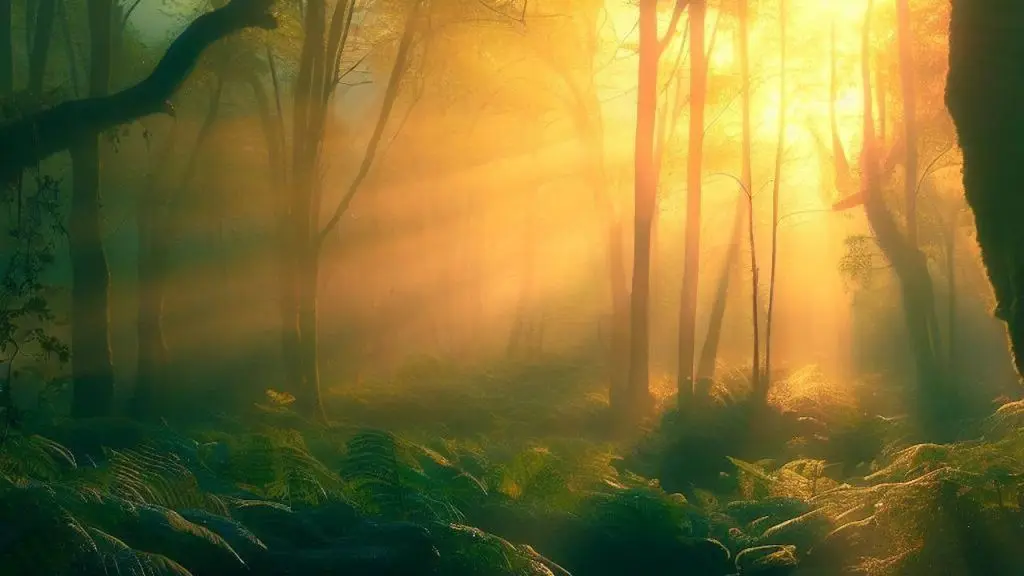
Fragas do Eume Frequently Asked Questions (FAQs)
Q: What is Parque Natural de las Fragas do Eume? A: The park is a “natural park” (meaning un-touched ancient Atlantic Forest) park located in the north-west of Spain, in the province of A Coruña, Galicia. It is considered one of the best-preserved examples of a temperate rainforest in Europe and is home to a diverse range of flora and fauna.
Q: How can I get to Fragas do Eume? A: The park can be reached by car, taking the AC-151 road from Pontedeume. You can also reach the park by taking a bus or train to Pontedeume, and then taking a local bus or taxi to the park.
Q: Is there an entrance fee to enter? A: No, there is no entrance fee to enter the park. The entrance is free with a guided visit, usually in 45-minute shifts.
Q: What are some activities that visitors can do in the park? A: Visitors to the park can engage in a variety of activities such as hiking, wildlife viewing, visiting the Monastery of Caaveiro, picnicking, and kayaking.
Q: Are there any hotels or campsites nearby? A: Yes, there are several hotels and campsites near the park. Some options include Casa Piñeiro, Gran Hotel de Ferrol, Hotel Os Olivos, Parador de Ferrol, NOA Boutique Hotel, and Hotel Valencia.
Q: Are there any restaurants or cafes in the park? A: There are no restaurants or cafes within the park itself, but there are several options for dining nearby. Some of the restaurants near the park include Taberna de Caaveiro, Os Cen Pasos, Restaurante Muino do Vento, Luis Hostal Restaurante, and Restaurante Casa Pepe.
Q: What is the best time of year to visit ? A: The best time to visit depends on your personal preferences and what you want to see and do. The park is open year-round and offers different experiences depending on the season.
